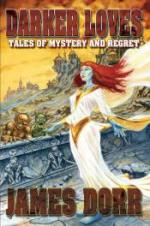Archive for September, 2015
For better or for worse I’ve always considered Ray Bradbury a major source of inspiration in my own writing. So today’s email brought an report from Indiana University Purdue University at Indianapolis’s Center for Ray Bradbury Studies on their recently ended exhibit, M iracles of Rare Device: Treasures of the Center for Ray Bradbury Studies, which “featured art and artifacts from the Bradbury Memorial Archive housed at IUPUI. The exhibit ran from August 3 to August 28 in the IUPUI Campus Center Cultural Arts Gallery and was visited by nearly one thousand people during the month. The August 28 reception and lecture by Bradbury Center director, Dr. Jonathan R. Eller, drew over a hundred attendees, both local and out-of-state.”
iracles of Rare Device: Treasures of the Center for Ray Bradbury Studies, which “featured art and artifacts from the Bradbury Memorial Archive housed at IUPUI. The exhibit ran from August 3 to August 28 in the IUPUI Campus Center Cultural Arts Gallery and was visited by nearly one thousand people during the month. The August 28 reception and lecture by Bradbury Center director, Dr. Jonathan R. Eller, drew over a hundred attendees, both local and out-of-state.”
Included was a link to a video tour of the exhibit conducted by Director Eller (pictured above) which can be found here. Also, for more information on the Center in general, one can press here.
Stephanie Buosi has announced a minor diabolical ruse, a shift of release date one day forward to October 15 for Erebus Press’s HOW TO TRICK THE DEVIL (see September 25, et al.), including my story “Lobster Boy and the Hand of Satan.” Moreover, she tells us that for “the first week, following the release, Horrified press will give 10% off the RP and will provide free global delivery,” so be alert and be aware! And, one more thing, the cover designed by Shaun Brassfield has now been unveiled as well.
alert and be aware! And, one more thing, the cover designed by Shaun Brassfield has now been unveiled as well.
Also announced Monday by Community Manager Kathryn Lively, AReCafe.com will be hosting a guest blog post by me on October 22. This will be an updating of a piece I had had on the Open Book Society in 2012 on networking as a help in marketing ones work titled “To PEDS and Beyond: Community and the Writer,” using as examples (among others) four stories from Untreed Reads Publishing that are available on AllRomanceEbooks’s sister site OmniLit. The chapbook/stories are VANITAS, I’M DREAMING OF A . . ., PEDS (a novelette), and the full-size anthology YEAR’S END: 14 TALES OF HOLIDAY HORROR with my lead story “Appointment in Time.”
The titles themselves can be found now on OmniLit by pressing here, then typing in “James S. Dorr” in the search box for author. And on October 22 or after, “To PEDS and Beyond” will be available here — but not until then, please.
It was the final one of a series of Dark Carnival and, later, Diabolique Film Festivals (see also September 19-21 2014) and so the Friday Night opening session consisted of films the festival people just happened to like as well as feel had lasting value: JAWS, THE LOST BOYS, and FRIGHT NIGHT. I skipped the last due to lateness of night plus having seen it (and not for the  first time) just a year before, but I saw JAWS for the first time on the “big screen.” While I’m not that much a fan of fish movies (note: MOBY DICK doesn’t count, whales being mammals, and anyhow despite the title it’s about things other than sea life), I do have to say that one is a good one. Of course — and sorry, Roger Corman — I now have to set a higher standard for anything else I now see that has sharks. But even without quality action and acting, JAWS was a first, as was THE LOST BOYS, this time in suggesting in a punk sort of way that being a vampire could actually be fun.
first time) just a year before, but I saw JAWS for the first time on the “big screen.” While I’m not that much a fan of fish movies (note: MOBY DICK doesn’t count, whales being mammals, and anyhow despite the title it’s about things other than sea life), I do have to say that one is a good one. Of course — and sorry, Roger Corman — I now have to set a higher standard for anything else I now see that has sharks. But even without quality action and acting, JAWS was a first, as was THE LOST BOYS, this time in suggesting in a punk sort of way that being a vampire could actually be fun.
Then Saturday came with my once more missing the final movie, LANDMINE GOES CLICK, directed by Levan Bakhai (“Trapped standing on an armed landmine, an American tourist is forced to watch helplessly while his girlfriend is terrorized,” say the program notes), though word of mouth afterward on Sunday said it was intense. Just not my kind of movie, sorry. Most of Saturday’s sessions were for short films, but there was one other feature, DEEP DARK, directed by Michael Medaglia (“Hermann, a failed sculptor . . . finds a strange, talking hole in the wall. The hole has the power to fulfill his wildest dreams, or it just may become his worst nightmare.”), which was of particular interest to me in part as a film about art and  creation. I would recommend it for just being weird in a good way, though its depiction of the artist’s passion for his/her work struck me as being a little bit off, at least in terms of my own experience. But also (speaking of Roger Corman) it just occurred that he handled the basic theme — artist finds “shortcut” as a substitute for talent — as well many years ago in BUCKET OF BLOOD.
creation. I would recommend it for just being weird in a good way, though its depiction of the artist’s passion for his/her work struck me as being a little bit off, at least in terms of my own experience. But also (speaking of Roger Corman) it just occurred that he handled the basic theme — artist finds “shortcut” as a substitute for talent — as well many years ago in BUCKET OF BLOOD.
Of Saturday’s shorts, some that stood out were “Black Eyes” by Rick Spears (two children play dead, then play zombies), “666 Square Feet” by Ray Zablocki (especially chilling in that it’s based on a true incident), “Crow Hand!” by Brian Lonano (wonderfully zany new monster), “Lifeline,” Jeffrey Wang (festival winner for best effects and best actress), “Trajectoires,” Phillipe Massoni and Sébastien Jovellar (small-time crime gone bad, with a French bourgeois flavor), “Invaders,” Jason Kupfer (small-time crime gone bad — must be seen to be believed), and “Lapsus,” Karim Ouaret (bigger-time crime and a laundromat, questioning what one is to believe).
Sunday’s program moved out of the Indiana University Cinema to a lecture hall in the nearby Radio/TV Building, with three feature films — including one I had been waiting more than a year to see — and one session of shorts plus extra shorts with the first two features (highlights including “Soccer Moms in Peril” by Damian K. Lahey and ”Son” by Judd Myers). The first full-length film was a near-future, paranoic science fiction dystopia, LISTENING, directed by Khalil Sullins, about experiments in mind-reading technology and resulting governmental abuse. It was interesting and raised real questions, although the  ending was a bit abrupt from a writer’s point of view (both wonderfully clever in setting up but possibly too easy in execution). I’d call it the weakest of the three, but still much worth seeing if one has a chance.
ending was a bit abrupt from a writer’s point of view (both wonderfully clever in setting up but possibly too easy in execution). I’d call it the weakest of the three, but still much worth seeing if one has a chance.
Feature two was one I not only recommend but will probably buy for myself if I can find a used copy, LIVE-EVIL. Tag line: “This is Biblical-grade shit; I’m an atheist.” (from a deputy sheriff attempting to resign on the spot — fortunately the sheriff talks her into staying). Or, as the festival docent put it, “so much fun, such a crazy flick,” supposedly inspired by both GHOSTBUSTERS and NIGHT OF THE LIVING DEAD, with the first half in black-and-white and the second half in color, and with the Devil (or maybe just a devil) in a jail cell in a college town on Halloween night. Funny, scary, and ultra-weird.
Then, finally, the evening closed with one I’d seen a third of before at NASFiC last summer, TALES OF POE directed by Alan Rowe Kelly and Bart Mastronardi (cf. July 23, also September 24 — including a link to a review by Terry M. West in HALLOWEEN FOREVERMORE — 2014). This is an anthology film in three parts, the first (that I’d seen before) and in my opinion the best being “The Tell Tale Heart,” with the principals switched from male to female and the old woman a once-silent era film star, with a frame story set in an insane asylum. The second, perhaps weaker part is “The Cask,” based on “The Cask of Amontillado” but more as a crime story than one about madness, with echoes also from “The Black Cat,”  “The Masque of the Red Death,” and even hints of “The Pit and the Pendulum” and “The Fall of the House of Usher” (and with a sullen maid named “Morella” to boot, but look also for a fellow asylum inmate’s doll named “Annabel Lee” in part one). And finally a sort of poem in pictures, “Dreams,” based on (and quoting from) a youthful poem by Poe of the same name, though ending with a nod to the more familiar “A Dream Within a Dream,” exploring some general themes of Poe’s, including the idea that the “most poetic subject” would be the death of a beautiful woman. (So, okay, I’ll put in the plug: with the beautiful woman abstracted as art, this is also the overall theme of my THE TEARS OF ISIS, whereby the dedication to Poe at the book’s beginning. Thus, you see, everything is connected.) This is an ambitious segment and probably wouldn’t be to everyone’s liking, though it’s a kind of thing I go for, and which in this case I found fascinating (and, weirdly, a little bit reminiscent of Ken Russell’s THE FALL OF THE LOUSE OF USHER, see July 17 this year) although I’d want to look at it at least one more time before I could decide for sure if it ultimately succeeds.
“The Masque of the Red Death,” and even hints of “The Pit and the Pendulum” and “The Fall of the House of Usher” (and with a sullen maid named “Morella” to boot, but look also for a fellow asylum inmate’s doll named “Annabel Lee” in part one). And finally a sort of poem in pictures, “Dreams,” based on (and quoting from) a youthful poem by Poe of the same name, though ending with a nod to the more familiar “A Dream Within a Dream,” exploring some general themes of Poe’s, including the idea that the “most poetic subject” would be the death of a beautiful woman. (So, okay, I’ll put in the plug: with the beautiful woman abstracted as art, this is also the overall theme of my THE TEARS OF ISIS, whereby the dedication to Poe at the book’s beginning. Thus, you see, everything is connected.) This is an ambitious segment and probably wouldn’t be to everyone’s liking, though it’s a kind of thing I go for, and which in this case I found fascinating (and, weirdly, a little bit reminiscent of Ken Russell’s THE FALL OF THE LOUSE OF USHER, see July 17 this year) although I’d want to look at it at least one more time before I could decide for sure if it ultimately succeeds.
One thing I can say, though: this is a film I’ll be looking out for to buy for myself.
Stephanie Buosi, of Erebus Press, has announced a release date for HOW TO TRICK THE DEVIL (see September 9, August 8, et al.) in just three weeks, October 16. She also points out that this will be the publisher’s debut anthology, with more projects to come. My tale in this one is of carney life (and possible death) titled “Lobster Boy and the Hand of Satan.” As for more on the book as a whole, to quote the back cover:
The devil lures with sweet words and promises, do you fall for his trap or trick him instead? Can you really have it all?
HOW TO TRICK THE DEVIL tells stories of trickery and deception; of monsters lurking in unexpected places; of the lengths we might go to get what we want. Much more than your average deal-with-the-devil tale, the talented authors in this  collection explore the motivations behind the choices we make, be it out of fear, greed, or desperation.
collection explore the motivations behind the choices we make, be it out of fear, greed, or desperation.
The trickster works in confidence, never expecting the twists that just might tear their plans apart. Evil is not always rewarded, but the hero does not always win.
Then in other news, I’ve just received a cover image for CORPUS DELUXE: UNDEAD TALES OF TERROR , for which one need only look up to the right. My offering in CORPUS DELUXE is a “Tombs” series story called “River Red,” of which see yesterday’s post directly below.
Sometimes you’ve got it, sometimes you don’t. Sometimes you submit a story to an anthology that may be peripheral to its theme depending on how the editor sees it, sometimes it’s more like a solid hit right down the center of the park — or at least that’s how you see it. In this case the money might not be great, though they encouraged reprints. And the title, well, how could one resist? CORPUS DELUXE: UNDEAD TALES OF TERROR.
“We want your horror stories featuring the undead — zombies, revenants, mummies, ghouls, ghasts, you name it, even vampires although bloodsuckers may be a hard sale since we envision ourselves being deluged with vampire stories. Be original!” The length range was 2000 to 5000 words (this let out some vampire stories I might have tried, published in places like DAILY SCIENCE FICTION, since they’d be too short). So zombies could be nice, but aren’t they getting a bit common too?
But above all the idea is still: be original. What I do sometimes is list out stories when reprints are allowed, then cross out the ones that seem least likely, taking in word lengths, sub-themes, etc., circling the ones that seem most attuned to what seems to be wanted. So what ended up on top was a “Tombs” story, one in an exotic dying-world setting a nd with a zombie in it, yes, but with a science-fictional sort of pseudo explanation, and as a bonus one that appears in THE TEARS OF ISIS (albeit originally published in Canada in Ink Oink Art, Inc.’s 2008 anthology ESCAPE CLAUSE) thus making it a sort of advertisement as well for the collection. And also a story I often use for readings, etc., with (may I say it?) a truly horrific ending.* The story, if not last (cf. post for September 19, below) then next to last in THE TEARS OF ISIS, “River Red.”
nd with a zombie in it, yes, but with a science-fictional sort of pseudo explanation, and as a bonus one that appears in THE TEARS OF ISIS (albeit originally published in Canada in Ink Oink Art, Inc.’s 2008 anthology ESCAPE CLAUSE) thus making it a sort of advertisement as well for the collection. And also a story I often use for readings, etc., with (may I say it?) a truly horrific ending.* The story, if not last (cf. post for September 19, below) then next to last in THE TEARS OF ISIS, “River Red.”
Off it went Monday, September 21, and the question became “did I choose well?” The answer arrived today, only three days later, from Editor Jorge Salgado-Reyes: “Thank you for your submission. We have accepted it.” In other words, a resounding yes.
(And one sort of P.S. that can bear repeating: “Please announce it from the four corners of the interwebs. We need as much social media buzz as possible in the lead up to publication.”)
*The ending, actually, is cribbed from Euripides so I probably can say it.
Fantasy writers, has the Green Man of British folklore been unmasked? This Sunday’s email brought a rather interesting piece  by Frank Cottrell Boyce in the British newspaper NEW STATESMAN, “English Magic: How Folklore Haunts the British Landscape,” a review of Carolyne Larrington’s THE LAND OF THE GREEN MAN. Kudos on this one go to Robert Dunbar and RJ Cavender who provided the link via LITERARY DARKNESS on Facebook, and which you may also partake of right here.
by Frank Cottrell Boyce in the British newspaper NEW STATESMAN, “English Magic: How Folklore Haunts the British Landscape,” a review of Carolyne Larrington’s THE LAND OF THE GREEN MAN. Kudos on this one go to Robert Dunbar and RJ Cavender who provided the link via LITERARY DARKNESS on Facebook, and which you may also partake of right here.
The lady gets around, at least on occasion. In fact, today, at my writers group meeting (featuring, by the way, discussion of a new flash piece by me titled “His Dead Ex-Girlfriend”) I happened to mention the way collections of stories are edited so that one of the strongest ones will usually come at the end, the reason being that that’s what the reader will remember last — and so it will have left a good impression should a “volume two” show up later on. One example I gave was my own THE TEARS OF ISIS with its title story bringing up the rear. Then, less than an hour later, perusing my email, I happened to come across a new review on Goodreads, not only of THE TEARS OF ISIS, but especially praising its final story.
so it will have left a good impression should a “volume two” show up later on. One example I gave was my own THE TEARS OF ISIS with its title story bringing up the rear. Then, less than an hour later, perusing my email, I happened to come across a new review on Goodreads, not only of THE TEARS OF ISIS, but especially praising its final story.
Coincidence? Lovely! But to the point, if you would like to read for yourself what reviewer William L. Nienaber had to say, please press here. Or, in the company of other reviews via Amazon (but, WARNING, the one just after it is not nearly as nice), press here.
I’m not sure if one should make much of this or not, but it’s in today’s crop of email alerts, on THE INDEPENDENT (independent.co.uk), by Jack Shepherd: “Chimpanzees Love Horror Films, Research Finds.” Finder’s credit in this case is courtesy of Robert Dunbar via LITERARY DARKNESS on Facebook. In some ways the title may be a cheat, the brief film  in question starring, next to a regular human, a man in a monkey suit to aid audience identification. Also it’s unclear which one they cheered for, if either, only that the film held their attention — focused particularly on the hammer used in an attack — despite attempts by researchers to distract them. (In fact, it occurs to me, King Kong notwithstanding, that it might not be horror per se., but action — or violence — the chimps were applauding.)
in question starring, next to a regular human, a man in a monkey suit to aid audience identification. Also it’s unclear which one they cheered for, if either, only that the film held their attention — focused particularly on the hammer used in an attack — despite attempts by researchers to distract them. (In fact, it occurs to me, King Kong notwithstanding, that it might not be horror per se., but action — or violence — the chimps were applauding.)
Be that as it may, the next time someone questions you for having the bad taste to like to watch horror, you need only start to peel a banana and say that you’re in the best of company. Or so claims the article which can be found here.
The curator tried to solve the mystery. Of her flesh’s coolness. “The soul,” he explained, “is a complex thing, a thing of more than a single aspect. Its z’etoile, over all — its ‘star of guidance’ — in some ways determines its other parts’ workings. Its will, its psyche, those things that make it unique, that is, the person whose soul it is part of. For the body, also, is part of a person.
”Its animus, that which inhabits the flesh and gives to it motion. And halts its corruption. These are other portions as well, all held together in delicate balance. When one is living, held, too, with the body.”
”And when one is dead?” a listener questioned.
”And when one dies, that balance is broken. A ‘glue,’ if you like, has released its hold on these parts, letting all go their ways — some all at once, some lingering for some time. Some leaving, perhaps, never, as in those cases the Ancients called ‘hauntings’ in legends that have come down over the ages. Yet this is no ghost-soul — “
(From “The Ice Maiden,” THE TEARS OF ISIS, Perpetual Motion Machine Publishing, 2013)
In my “Tombs” series of shared-universe, far-future stories of which “The Ice Maiden” is an example, I have yet to depict an actual full-blown religion, with ceremonies, temples, etc., but I have had characters often relate to a set of shared beliefs in spiritual matters — of what is the soul made? what becomes of one after death? etc. — from which a religion might be constructed. Other descriptions come up, e.g., in “The Walking” and “There Was an Old Man” in my DARKER LOVES: TALES OF MYSTERY AND REGRET, as well as “Raising the Dead,” published this spring in the White Cat Publications anthology AIRSHIPS & AUTOMATONS. Thus in “The Ice Maiden” the title character’s z’etoile, for instance, has placed her into a sort of stasis, body and soul , until her fated lover, Caldera, arrives to join her even if thousands of years too late.
, until her fated lover, Caldera, arrives to join her even if thousands of years too late.
Not all of these stories hinge on these beliefs, as the three I cite do, but they’re still in the background, a part of the (hopefully) rich, complex setting that becomes the common theme of the series. So, too, any horror story that includes characters existing after their Earthly deaths — zombies, ghosts, vampires — also implies a set of beliefs which, even if not a part of the foreground, suggests a society in which religion or spirituality plays a role in the way people think.
So why bring this up? As it happens, today’s email included a piece by Michael W. Clune on “Five Books About Imaginary Religions,”on TOR.COM, in which it is noted: Speculative fiction writers can’t look away. If technology represents humanity’s transcendence through reason, religion implies its eternal submission to mystical entities. . . . [O]ften anti-science, they attract charlatans, they prey on ignorance — and yet there’s usually a kernel of real mystery at their heart, and the workings of the religion are often the coolest things about a book. Perhaps it’s no surprise. After all, sci-fi and fantasy writers create entire worlds; many of them feel that no imaginary world would be complete without an imaginary religion.
And so, in the spirit of Monday’s entry on economics just below, about something else I think is important to be aware of in a story’s background, one may (or not, as one’s taste dictates) click here. But if so, be sure to read the comments too for other titles beyond the first five.
Kenneth A. Gunther, President and CEO of the Independent Community Bankers of America, said, “The Federal Reserve’s response on September 11th ensured a fully functioning payments system when the private sector could not…. The Fed’s dual roles [as provider of services and regulator of the payments system] are an essential element of the ongoing homeland security of the United States.”
[a true story] Weirdly, I had written a story in March 2001 inspired in part by the October 12 2000 attack on the destroyer USS Cole in Yemen’s Aden harbor, about the interconnectedness of worldwide financial systems and how they, just as the interconnected alliances in 1914 turned a single relatively unimportant political assassination into World War I, could result in a terrorist attack on a New York-like US city. On September 11 that year it was being looked at by GOTHIC.NET and I, feeling it perhaps a bit tasteless given that day’s events, considered withdrawing it. Others, thankfully, not realizing my inspiration didn’t make the same connection — or if they did, still didn’t consider the story inappropriately prescient — and so it was published, titled “King Rat,” in GOTHIC.NET on March 11 2002. (“King Rat” has subsequently been published in my Dark Regions Press collection DARKER LOVES: TALES OF MYSTERY AND REGRET in 2007 and Perpetual Motion Machine Publishing’s 2013 anthology BLEED, profits from the latter going to the National Children’s Cancer Society.)
Be that as it may, there is an even more intriguing story about what really happened to the international finance system, via the US Federal Reserve, on “9-11” and the days that followed — and how perhaps the whole world was saved from a financial meltdown by (are we ready for this?) heroic bankers. Which brings the question, are economics proper fodder for science fiction/horror? I myself am interested in the economic underpinnings of the worlds I create in my fiction, and so I found this real-life account, “The Astonishing Story of the Federal Reserve on 9-11” by bunnygirl60 (that is, financial writer Arliss Bunny), to be fascinating. If you would be inclined to agree (or even if not), you can find the skinny, courtesy of DAILYKOS.COM, by pressing here.
Then, in comparatively trivial news, I received word today from MAIN STREET RAG Editor M. Scott Douglass that a reprint story, “Curious Eyes,” originally published in THE FICTION PRIMER in December 1988, has been accepted for their anthology IT’S ABOUT TIME. “’It’s about time.’ When you hear that phrase, what comes to your mind? A parent or a spouse, arms crossed, foot tapping, watching as someone sneaks in at night? Or do you see a calendar, its days or weeks flapping. Maybe you see time extending into an imagined future, something yet to be understood or experienced.” More information to be forthcoming.














